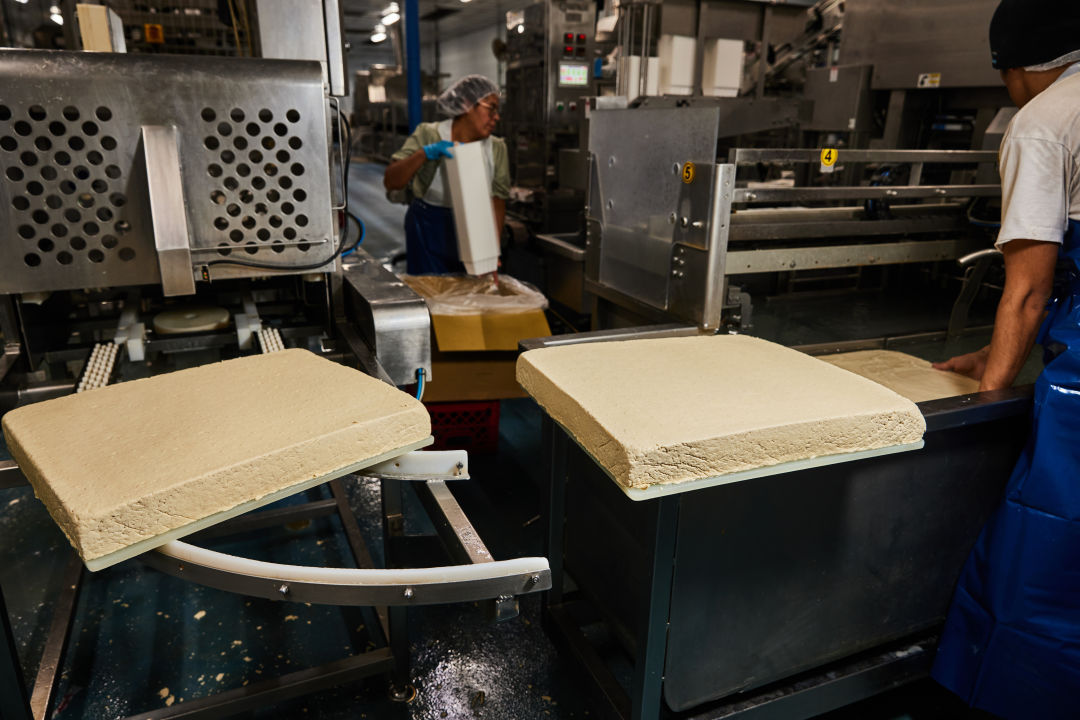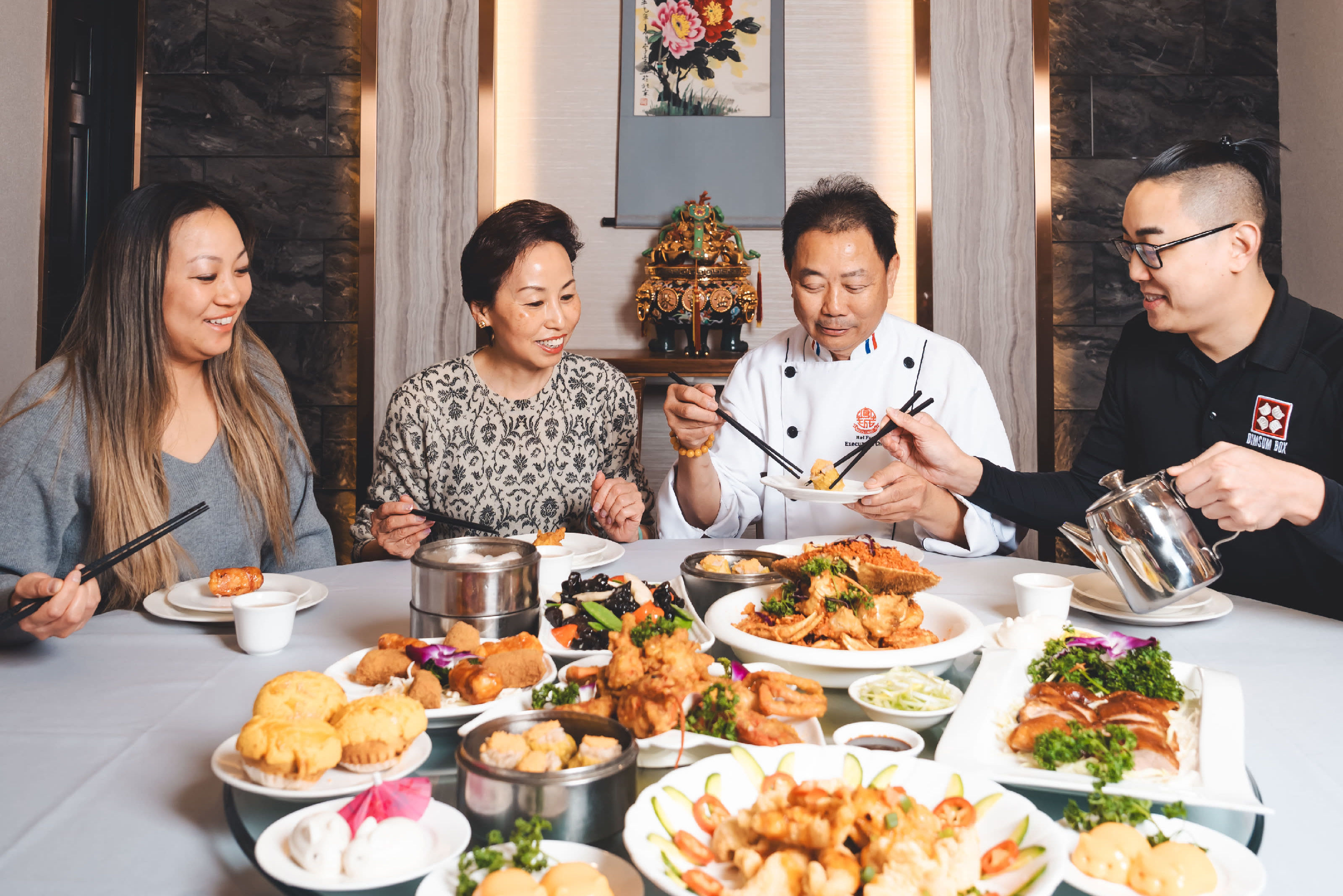How Houston-Based Banyan Foods Made Texans Love Tofu

Banyan Foods has become a Texas sensation with its Houston-made tofu, now sold at H-E-B.
Image: Michael Starghill
Carol Chiu did not set out to become a Texas tofumonger. When she moved to Houston in 1978, she couldn’t find much fresh tofu. Back then, many Asian foods were shipped from California. Why isn’t anyone making tofu here? she thought. Maybe I should.
She started with a blender and some cloth to strain tofu by hand. By day, she and her then-husband made tofu. In the evening, they delivered to restaurants and grocery stores by the bucketful, making rounds with their two young sons in an Econoline van. From those humble beginnings, Banyan Foods grew into the largest tofu manufacturer in Texas with sales of $1 million a year.
In a state known for barbecue, the success of Banyan Foods surprised even its owners, who never thought tofu would appeal to anyone beyond the Asian community. Now, mainstream grocery stores like H-E-B and Whole Foods stock Banyan and the company creates new products for their growing clientele.
This tale of the little tofu company that could is not just about immigrant grit, though there is plenty of that. It’s also about the meeting of demographic shifts and food trends, and a particular place where it all came together. “I don’t think our story would have happened anywhere else but Texas,” says Gary Chiu, vice president of Banyan and Carol’s oldest son.

Carol Chiu runs Banyan Foods with her two sons, Gary (left) and Jimmy.
Image: Michael Starghill
In Taipei, the Chius ran an import-export business dealing in sporting goods. But the desire for their boys to have a US education, as well as a fear of China taking Taiwan, landed them in New Jersey, where they knew a friend. That stay was short-lived. “Oh no, I cannot stand it. Too cold,” Carol, now 74, says. A college classmate living in Houston told her the city’s hot and humid weather was similar to Taiwan’s. Within a few months, they moved here.
The Chius were not the first to make tofu in Houston, but they were the first to scale up. Carol wanted a consistent, high-quality product hygienically sealed in packages, not fished out of a bucket at the market. What she needed was a tofu machine. But that machine was in Japan.
Carol told a local banker she met through some grocers that she needed $250,000 in Japanese yen so she could import a machine to make tofu and soy milk. Tofu was foreign to Charles “Mack” Neff, who had grown up in Louisiana and Florida, but he was impressed by the Chius’ work ethic and agreed to loan Banyan the money. That Neff took a chance on new immigrants is something Carol is so grateful for that she thanks him by name on Banyan’s packaging. “Banking locally matters as much as buying food locally,” it reads.

Tofu is made from soybean milk that has firmed into a curd.
Image: Michael Starghill
The machine arrived from Japan, accompanied by workers who set it up in the 3,000-square-foot warehouse on Bellaire Boulevard that the Chius leased. The family lived in an apartment across the street. At 4 a.m., the parents carried their sons over and cranked up the machine. The boys, Gary and Jimmy, slept on the floor until their mother woke them up for breakfast. “That was our childhood for the longest time,” Gary says.
The Chius divorced when the boys were in fifth and sixth grades. Though they grew up around the family business, the plan was never for Gary and Jimmy to work in it. Like many immigrant parents, Carol dreamed for her children to become doctors and lawyers, one of each. Gary began working at Banyan in 2001, then did stints elsewhere, but after Carol became sick with colon cancer (caught early, thankfully) he returned. Jimmy, the younger son, made it as far as the third year in medical school before telling his mom it wasn’t for him. When he joined the company in 2007, Gary warned him, “Working with mom is tough.”
Although personalities clash, they learned how to work with each other—and to their own strengths. Jimmy, now 47, is the organized one running office operations. Gary, 48, comes up with new products and writes cheeky copy for the packaging. Carol perfects the recipes; she had studied under Fu Pei-mei, known as the Julia Child of Taiwan.
As Houston’s Asian population grew, so did Banyan Foods. Between 1980 and 2020, the percentage of people in the Houston metro area who identified as Asian or Pacific Islander more than quadrupled, according to census data, and today Houston is home to a sprawling Asiatown.

Every block of tofu begins with many soybeans.
Image: Michael Starghill
But Banyan Foods’ biggest growth came from outside the Asian community with the rise of health foods, plant-based diets, and the locavore movement. “We accidentally rode this wave of vegan food trends; immigrant food trends, especially Asian; and the undeniable retail zeitgeist of local cuisine,” Gary says.
Central Market came calling in 2000, and, shortly after, so did its parent company, H-E-B. The grocery store wanted to buy tofu for the new Beechnut Street location in Houston’s booming Asiatown. When the store opened in January 2003, Carol was shocked to see it advertising Banyan tofu three for $1, selling it at a loss. Chinatown grocers, furious at being undercut, boycotted Banyan.
Carol cried. Chinatown was her core customer base. As she tells it, word of the boycott made it to H-E-B CEO Charles Butt himself. Soon, an H-E-B buyer showed up at Banyan’s offices to ask what else the brand made. Carol listed off their products: tofu skin, wonton wrappers, and kimchi. H-E-B ordered it all and eventually placed Banyan products in stores statewide.
Thus began the era in which the Chius spent weekends doing cooking demos in Western grocery stores across Texas. Asians, who have been eating tofu for 2,000 years, knew what to do with the stuff. It’s a drink. It’s dinner. It’s dessert. But other people needed help. From talking to shoppers, the Chius came to understand people’s insecurities about tofu. Then they addressed them with new products, such as already-seasoned tofu crumbles made from doufu gan, the dry spiced tofu ubiquitous in many Taiwanese households.

The milk of soybeans is extracted, then made into a curd.
Image: Michael Starghill
The new clientele pushed Banyan to innovate: tofu egg rolls (original, curry, and chipotle), vegan calamari, and kimchi salsa. There have been some misses (RIP, tofu spaghetti), but many items have been hits, like the crumbles and even tofu tamales, an idea from a customer. Gary pitched them to his mom as a Mexican zongzi and hired a tamale vendor to teach them how to make them. Gary now has his eye on the $1.8 billion Lunchables business. What if Banyan offered a vegan, less-processed version?
Banyan Foods now has a 32,000-square-foot facility in Southwest Houston—and a new tofu machine. The factory got an upgrade in 2022 with a $2 million machine from Taiwan. Soybeans (non-GMO, grown in the Midwest) first soak overnight, then get ground up with water. The soy milk is extracted and mixed with calcium sulfate to firm up into a curd. After a rest, it goes into molds for pressing (less time for soft tofu, more for hard). Cut into blocks and sealed into plastic trays, the tofu travels down a conveyor belt for pasteurization. From beginning to end, it takes roughly two hours to make a package of tofu, not including the overnight soak. The factory produces 12 pallets, or 7,920 packages, a day.

Rafael Gomez knew nothing about tofu 35 years ago when he applied to work at Banyan Foods. He’s now a part-owner in the company.
Image: Michael Starghill
Factory manager Rafael Gomez, 56, oversees production. His job has taken him to Japan and Taiwan to learn about the intricacies of tofu machines. An immigrant from Mexico, he has worked at Banyan for 35 years, though it took him four tries to get hired. Laid off from his industrial mechanic job in the oil industry, he kept applying at Banyan, even though, as he says, “I had no idea what tofu was.” Today he not only eats it as a healthy alternative to meat but wants other Latinos to try it. “For Latin people, it’s hard. We don’t have enough information about tofu,” he says. “I hope tofu can be in the Mexican market or Latin market.”
Gomez became a part-owner of the company when the Chius gave shares to longtime employees 12 years ago. Today, Banyan Foods is 30 percent Latino-owned, and most of its 12 employees are Latino.
“I think a lot of meaningful ventures might start off as an inspiration of an individual or a particular family,” Gary says. “But they certainly don’t become bigger things without contributions from other families. And in America, especially Texas, it’s mostly from Latino families and Latino labor.”
Texas is not just the backdrop to this Latino-powered, Taiwanese American–founded tofu company, but integral to its formation. Despite the negative headlines Texas generates for shipping migrants to other states, many everyday Texans are accommodating of different cultures, Gary says. Those cultures adapt and blend. After all, this is a place that has given rise to Viet-Cajun crawfish, Tex-Ethiopian barbecue, Tex-Indian food, and, yes, tofu tamales.
As tofu has become more accepted over the years, so have Gary’s own feelings of being an immigrant. A sense of perpetual displacement clouded his younger days. Growing up, he didn’t tell people he was from Taiwan (most people hadn’t heard of it, he says) and avoided talking about his parents’ work. When he first started doing store demos, he told shoppers that tofu tasted like chicken, trying to draw a line to something familiar. But today he doesn’t have to explain anymore.
“Tofu has more space to be itself,” he says.
And so does he.




